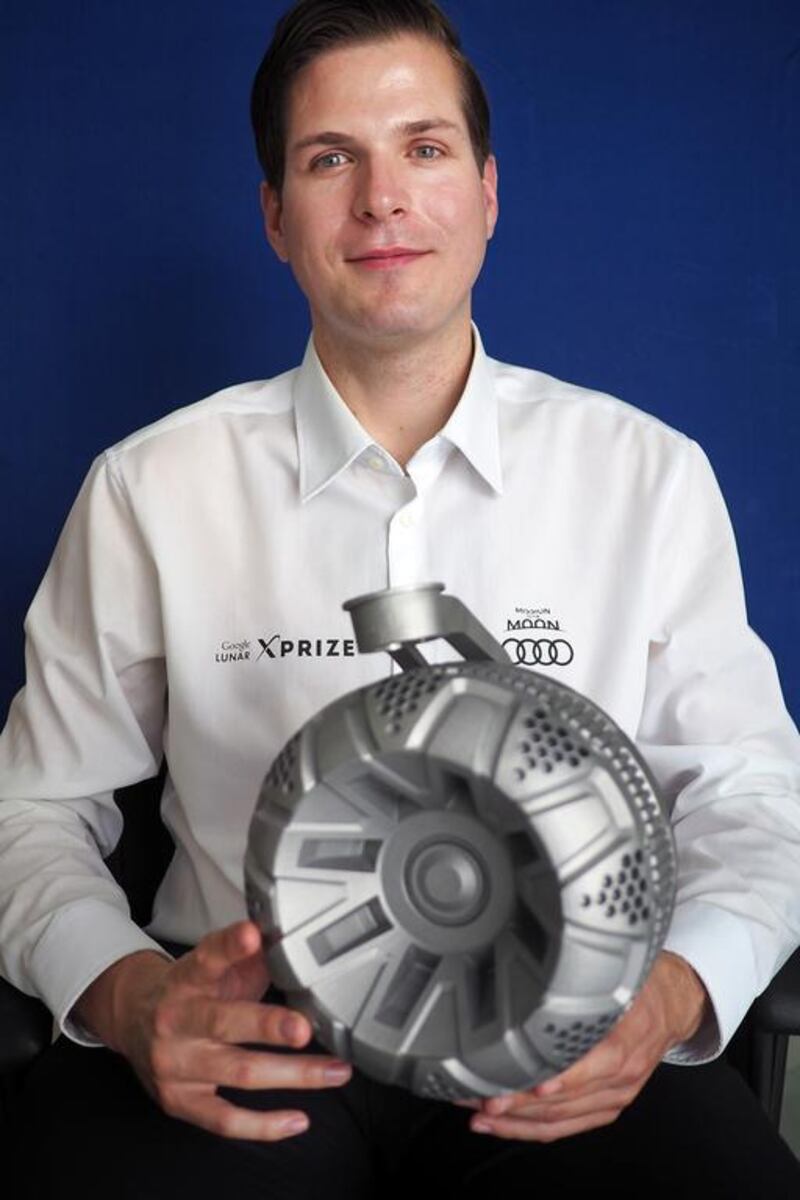ABU DHABI // One of the 16 remaining teams in a Google competition that will reward the first privately funded missions to the Moon has landed in the UAE to reconnoitre testing locations for its lunar vehicle.
The country’s hot, dry conditions and sandy, rocky terrain are ideal for putting a lunar rover through some of the rigours that will be encountered on the Moon, said Robert Boehme of the Part Time Scientists.
“We came to the emirates looking for areas that were as dry and as hot as possible as our mission will encounter extreme day-time temperatures as high as 160° Celsius,” said the founder and chief executive of the Berlin-based company.
The vehicle, which cost in the region of US$750,000 (Dh2.75 million)to build, will need to traverse at least half a kilometre of the Moon’s surface to qualify for the Google Lunar X Prize, a competition that encourages private space ventures by offering $30m in prize money.
Made largely of aluminium, the 35 kilogram rover has a top speed of 3.6 kilometres an hour and has already been tested in ice caves in the Austrian Alps and on volcanic terrain on the Greek island of Crete but is yet to be tested on soft sand inclines such as those of the Empty Quarter.
Being able to negotiate a variety of terrains is essential to complete its mission of exploring the area close to the landing site of Nasa’s last manned mission to the Moon, 1972’s Apollo 17.
The Google competition is challenging teams to send back high-definition images and video of the lunar site.
The first team to complete the mission will receive $25m, with $5m reserved for second place.
Although the competition provided the motivation to set up Part Time Scientists, Mr Boehme said its mission would go ahead regardless of being among the first to complete the tasks.
With the venture costing $35m, the prize money would not cover his company’s expenses, he said.
“By the time Nasa’s Mars rover was sitting on the launch pad it had cost $2.5 billion and the technology was already 12 years old. We want to be a part of the reinvention of space exploration and the development of its infrastructure to make it more accessible, up to date and profitable.”
Partnerships are the key to a successful commercial mission, said Mr Boehme. Part Time Scientists teamed up with the German car maker Audi to create the Audi lunar quattro.
The project proved to be mutually beneficial.
“Not only did we learn from them when it came to their vehicle know-how but they also learnt from our knowledge of space travel,” said Mr Boehme.
One of the things Audi gained from the project, he said, was the use of a coating designed to keep the rover cool in hot temperatures by reflecting 95 per cent of the light that hits it.
“They realised this could be very useful for their cars in summer,” he said.
Another way to revolutionise the space industry is to ensure that technology is adaptable.
PTScientists’ engineers learnt that the hard way after designing a module to fit the Falcon1 rocket, which was later discontinued by manufacturer SpaceX.
Their second hitch came as a result of the Crimea conflict, with the Russian rockets they hoped to use no longer receiving Ukrainian parts they relied on.
Part Time Scientists is now in the final phase of testing its rover and aims to begin its 380,000km journey to the Moon in November next year.
tsubaihi@thenational.ae






